By TREVOR HOGG
Images courtesy of Cinesite and HBO.
By TREVOR HOGG
Images courtesy of Cinesite and HBO.
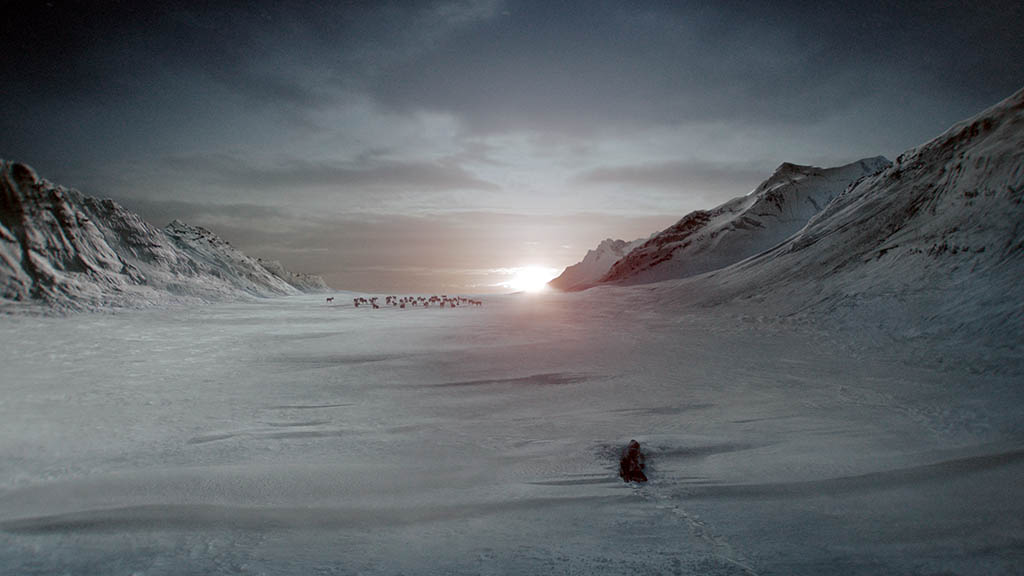
There was a limit to the lighting range for the opening sequence because it occurs at sunset and gradually becomes darker.
Audiences were introduced to what appeared to be a ritualistic murder in the Southern heat of the Louisiana delta for the debut of the HBO anthology series True Detective, then headed to the Far North to encounter a bizarre collection of frozen bodies in Alaska for the fourth season titled True Detective: Night Country, which features a cast of Jodie Foster, Kali Reis, Fiona Shaw, Finn Bennett, Isabella star LaBlanc, Christopher Eccleston and John Hawkes. Taking over the roles of showrunner and director was Issa López, who brought on Barney Curnow as Production VFX Supervisor to oversee the visual effects work, with one of the major contributors being Cinesite, which handled 140 shots spanning five of the six episodes that consisted of the series-opening caribou herd, a roaming polar bear and Ennis, Alaska.
“Barney Curnow’s approach to the visual effects on True Detective: Night Country was to have a light touch, respecting the feel and tone of the cinematography and production design. He didn’t want anyone to be talking about the visual effects afterwards because that would mean they had been brought out of the world we were trying to create.”
—Simon Stanley-Clamp, Visual Effects Supervisor, Cinesite

Extensive environment work was required throughout the season to convincingly recreate the Alaskan territory and terrain.
“Barney Curnow’s approach to the visual effects on True Detective: Night Country was to have a light touch, respecting the feel and tone of the cinematography and production design,” explains Simon Stanley-Clamp, Visual Effects Supervisor at Cinesite. “He didn’t want anyone to be talking about the visual effects afterwards because that would mean they had been brought out of the world we were trying to create. A lot of the work was world-building because the story takes place in this particular environment of Ennis, Alaska, a fictional town. It’s almost its own character, and we were piecing together this environment using disparate locations and set builds, and using visual effects as the glue to bring it all together, and to expand that world.” Snow was a significant natural element ranging from incidental to a blizzard. Stanley-Clamp explains, “The challenge with this type of work is maintaining continuity throughout the sequence, ensuring that the effect builds over time and conveys the story while also incorporating any nuances in the live-action plates. For instance, a small gust of wind catching the hood of Chief Liz Danvers’ [Jodi Foster] car could initiate a slight change in the simulation. The show is predominantly dark with all the exteriors taking place in darkness, which required some adjustment. We integrated environments and extended Ennis town, often using tiny pinpricks of light to guide the viewer’s attention along a road or to the base of a mountain range. We utilized the torchlight beam from Danvers to illuminate the snowstorm she encounters, with much of the background snow fading into complete darkness.”
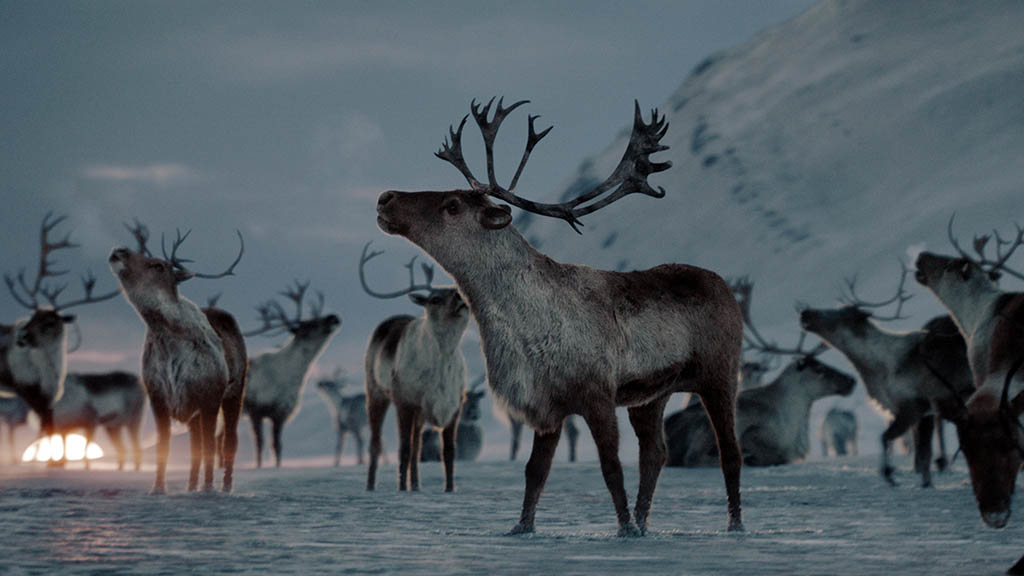
The caribou sequence underwent a comprehensive development process, starting with the script followed by storyboards, animatics and a cut comprising of live-action natural history footage.
“A lot of the work was world-building because the story takes place in this particular environment of Ennis, Alaska, a fictional town. It’s almost its own character, and we were piecing together this environment using disparate locations and set builds, and using visual effects as the glue to bring it all together, and to expand that world.”
—Simon Stanley-Clamp, Visual Effects Supervisor, Cinesite
Despite the desolate wintry landscape, animals can be found roaming with some of them deciding to visit the streets of Ennis. “Creating the polar bear was a delightful experience,” Stanley-Clamp states. “We meticulously crafted a detailed sculpt, groom and creature effects. Knowing that she would be prominently featured in a long, lingering shot, we initially designed her to be very skinny, as per the script, but Issa later requested that she be bulked up a bit to enhance her presence and create a more familiar silhouette for the viewers. I view the polar bear similarly to how we perceive foxes in the U.K.; they emerge at night, roam our streets and scavenge for food. In the two scenes where the polar bear appears, it simply wanders through, searching for its next meal. The caribou sequence underwent a comprehensive development process, starting with the script, followed by storyboards, animatics and a cut comprised of live-action natural history footage. We combined footage of caribou, deer, reindeer and any other relevant animals to convey the story. Silver Studios created a refined previs in collaboration with Barney and production, which helped solidify the final concept.”
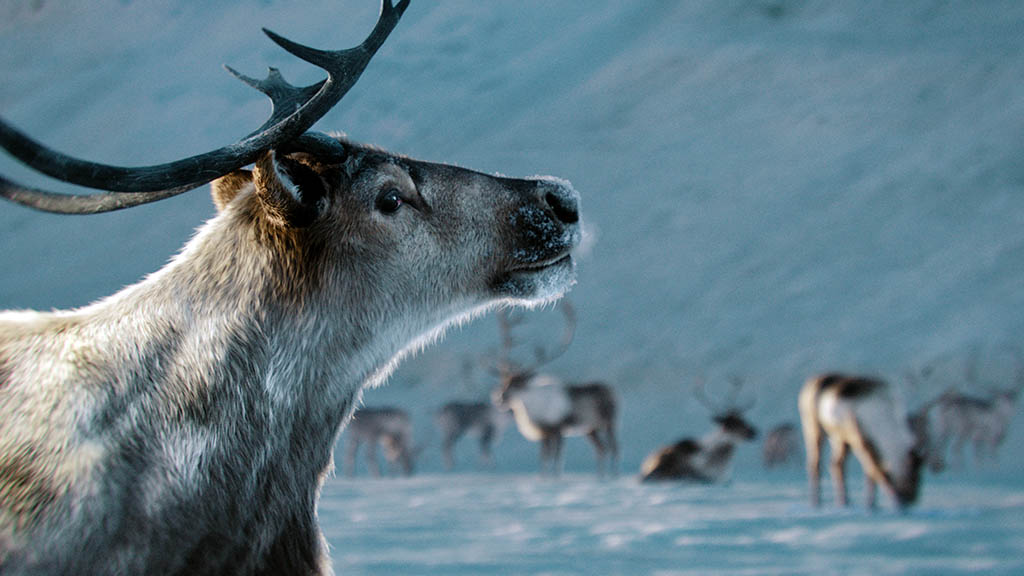
Cinesite took photographic reference of reindeer in Hampshire as they are similar to caribou, which informed every aspect, from the groom to the lighting to movement.
“Subsequently,” Stanley-Clamp continues, “we commenced work on the sequence, developing still concepts for the environment. We began with production footage and expanded upon it, ultimately retaining only the section of terrain where the hunter was positioned. Integrating this element into our final shot granted us complete control over the lighting of the environment, allowing us to have the sun descend below the horizon by the end of the sequence, heralding the permanent night that persists throughout all six episodes. The charging herd of caribou was a combination of hand-animated and crowd-simulated elements, depending on the number of animals in the shot. Super close-up details of the main caribou showcased the groom, complemented by Houdini breath effects and atmospheric elements.”
“The show is predominantly dark with all the exteriors taking place in darkness, which required some adjustment. We integrated environments and extended Ennis town, often using tiny pinpricks of light to guide the viewer’s attention along a road or to the base of a mountain range. We utilized the torchlight beam from Danvers to illuminate the snowstorm she encounters, with much of the background snow fading into complete darkness.”
—Simon Stanley-Clamp, Visual Effects Supervisor, Cinesite
No major alternations had to be made to the pipeline. “This was the first show to fully utilize USD at Cinesite, ultimately giving greater flexibility to our pipeline, sharing and tracking work through various packages; it was more of a background change to our internal architecture,” Stanley-Clamp explains. “Principal photography took place in Iceland, doubling for Alaska; which meant that by the time we were looking at sequences, there was already a cutting copy and footage for us to look over. After initially bidding on boards and concepts, we pretty quickly received an animatic and previsualization. For the bigger sequences, like the creature animation, Barney tried to get as much in front of Issa for feedback as early as possible, starting with animatics, timing out the storyboards and then previs before anything was filmed. This worked well for the polar bear sequences, which ended up on screen pretty much as the previs. The opening sequence with the caribou, however, went on more of a journey because, unsurprisingly, we couldn’t find any reference of caribou leaping off a cliff to their death! For the look of Ennis and its surrounds, we had a lot of references from [Production Designer] Daniel Taylor’s art department look book, as well as the photography and drone work from Alaska itself. Daniel had a map of the whole town of Ennis, which we used as the basis for the really wide DMPs, and we also took that map and built it out into a wider environment.”
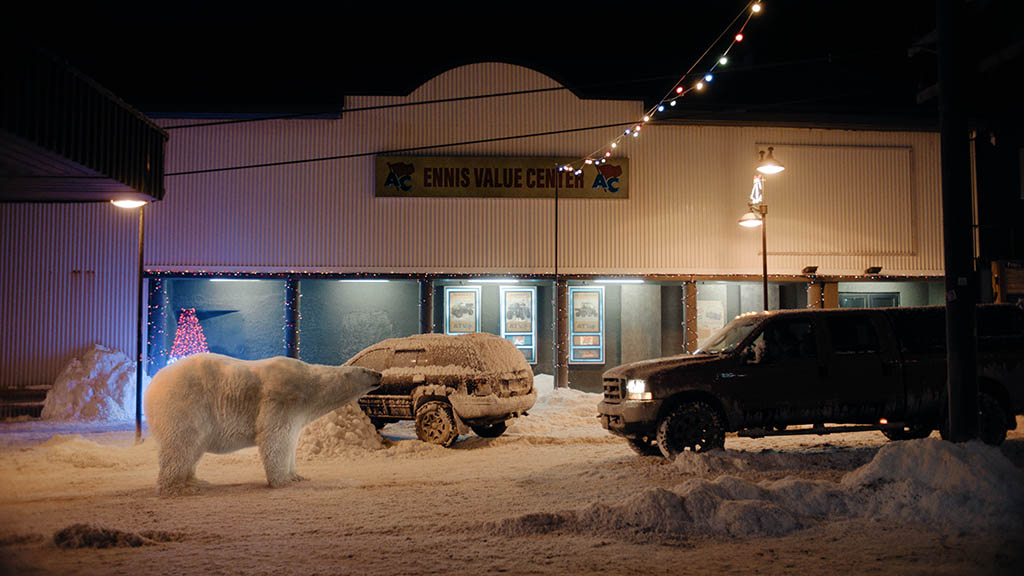
The effects caches for the polar bear in Episode 404 totalled 15.6 terabytes of data.
Extensive environment work was required to turn Iceland into Alaska. “Distant mountain ranges were added to the background, leading down to the town, to the outskirts of which extend out to the frozen open expanse of sea and to a perpetual snowy wilderness,” Stanley-Clamp states. “A blizzard approaches around the end of Episode 404, which continues into the following episodes. We matched closely what they had created and filmed on set. They had fake snow with smoke pumped into it, blown in with fans, and we needed to augment and extend that. It looked like fine particulate mist rather than snow and we needed it to match it. We created it using volumetric mist, CG effects, adding in snow particulate to bulk it out, and adjusting the speed, density and depth.”
“Besides weather simulations, digital breath was added throughout the season to reflect the frigid, chilly atmosphere. Bears are warm-blooded creatures, and when we see it peering through Danvers’ driver’s-side window, it breathes on the glass, pausing before walking away. It is an unnerving moment; breath was added to the side window, which evaporates to reveal the bear looking in.”
—Simon Stanley-Clamp, Visual Effects Supervisor, Cinesite

Initially, the polar bear was skinny, as per the script, but later redesigned and bulked up to enhance her presence and create a more familiar silhouette for the viewers.
“Moving away from snow to fire simulations,” Stanley-Clamp remarks, “there’s a sequence towards the end of the season where Danvers is in a warehouse, and there is a fire with sparks floating around. There are embers coming off a bonfire, and when we first see them, they are real. But they need to help tell the story, to lead Danvers through a warehouse, so from a certain point they are visual effects. When she finds an open door, we added the snow blowing through it. Besides weather simulations, digital breath was added throughout the season to reflect the frigid, chilly atmosphere. Bears are warm-blooded creatures, and when we see it peering through Danvers’ driver’s-side window, it breathes on the glass, pausing before walking away. It is an unnerving moment; breath was added to the side window, which evaporates to reveal the bear looking in.”
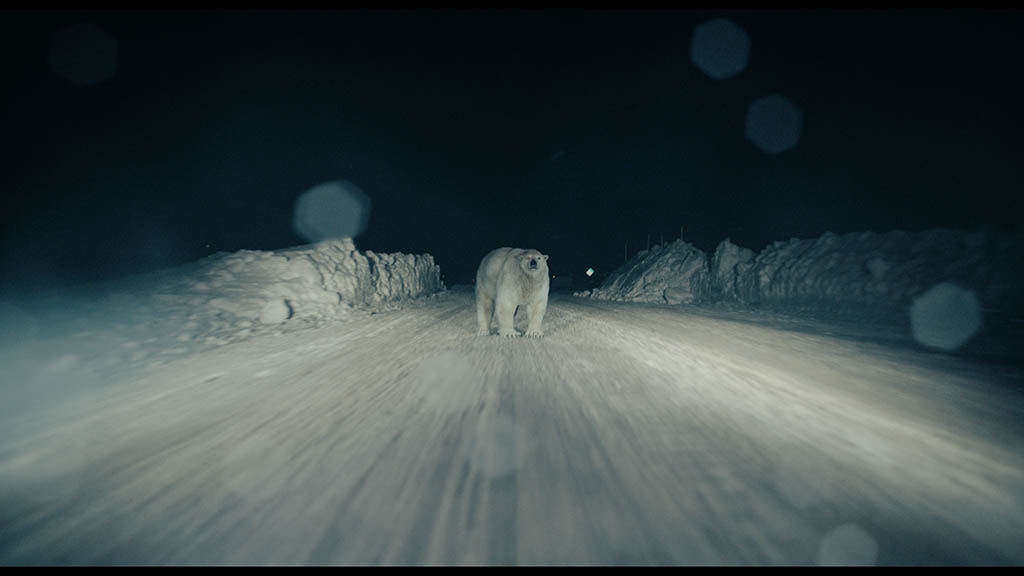
Initial versions of the groom for the polar bear were more shaggy, long and greasy; however, the final version was cleaner and carefully adjusted not to be too cute or fluffy.
The biggest challenge was the landscape for opening caribou sequence. “The valley was in five shots that we keep coming back to in the cut,” Stanley-Clamp describes. “We were creating an environment, which was based on a plate that didn’t satisfy the brief. We needed to create something new but not completely different, and there was the uncertainty of not knowing whether the client would like it. We needed to find a sweet spot where it looked similar but better. That was tricky because there were a lot of people who have spent a lot of time finding that location, dressing it and filming it. You need to be sensitive to that but do the right thing for the sequence. Of course, the caribou and polar bear were also difficult. Cinesite has created monsters and otherworldly creatures for countless episodic and feature film productions previously. With fantastical creatures, there is no existing audience expectation about what they might see. However, with realism you have the additional challenge that people think they know what something should look like, which is in many respects harder. I am incredibly proud of the whole team for its work on True Detective: Night Country, which I believe raises the bar in terms of quality and realism.”
Watch a brief video on how Cinesite created a wide range of visual effects for Season 4 of True Detective: Night Country, from photoreal animals to snowy Alaskan vistas. Click here: cinesite.com/night-country/ https://vimeo.com/915170844?share=copy